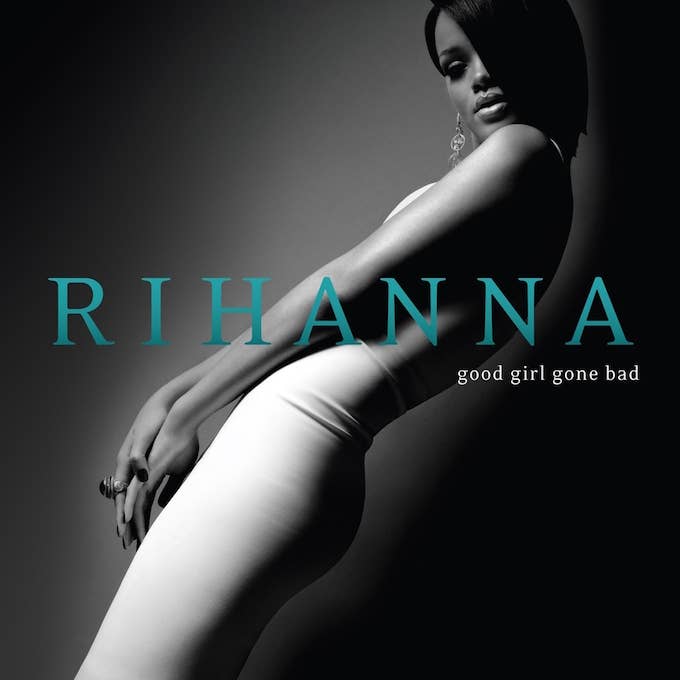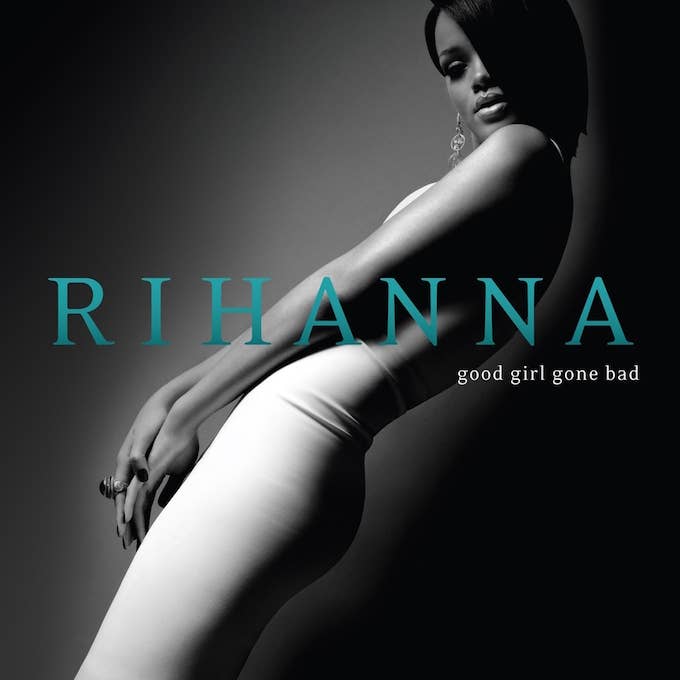
Evolution is a privilege. To be a musician who experiments, you’re forced to prove you have the talent that justifies the patience sonic evolution requires from the listener (and the industry). In an era defined by instant gratification, young artists are typically pressured into being immediately great and fully formed. You get a shot, maybe two, and only after that is growth encouraged. For Rihanna, a star unique in her dedication to personal charisma and unbelievable pop staying power, it took three tries. Good Girl Gone Bad, which turns 10 today, feels the true opening salvo of her career, and the only one to truly hint that she would become something more dangerous and interesting than a pop starlet with with a handful of strong singles. It’s her first record that feels like it's made by the Rihanna we know today, a riskier effort filled with numerous successes. Good Girl Gone Bad is her breakthrough.
There’s a certain folklore to Rihanna’s story: She started in a girl group in her native Barbados, immediately eclipsing her collaborators when discovered by producer Evan Rogers. He brought her to the U.S. to record demos of “Pon de Replay” and “The Last Time”; the former became her first hit. It’s through Rogers that the then-head of Def Jam, Jay Z, heard the song and immediately dismissed Rihanna—the track seemed too massive for a new artist. Eventually he was persuaded, and the song made it to her debut LP, 2005’s Music of the Sun. Her second LP, 2006’s A Girl Like Me, and its singles, “SOS” and to a lesser extent, “Unfaithful,” incubated her talent further. Both albums flirt with mainstream R&B and pop elements while remaining true to Rihanna’s Caribbean heritage. They contain strong reggae and dancehall elements that would never truly disappear from her discography, but would soon to be pushed to the edges of her sound.
The success of two major label releases and a few radio hits put RiRi in a crucial spot—she could either continue on in her present form, releasing albums with a handful of titanic tunes and otherwise forgettable B-sides, or she’d graduate into real superstardom. To accomplish the latter, she had to evolve. That’s exactly what she did—with the help of hot shot producers and writers like Tricky Stewart, Sean Garrett, The-Dream, and Timbaland—and began embodying a new kind of persona. Love songs were replaced by sexy lyricism, Caribbean calling cards with big, dance-pop beats. Her third album title, Good Girl Gone Bad, reflected that reinvention—gone were the days of sweetness; Rihanna was exposing her edge, not forcing it upon an unprepared audience, the failing of many pop hopefuls.
Good Girl Gone Bad opens with Jay Z’s verse in “Umbrella.” Before we hear her voice, we hear Jay shouting her name—an intentional gesture reflecting his eventual belief in the young singer, one the world would soon feel too. The track, originally written for Britney Spears, is the most memorable song on Good Girl Gone Bad—a Grammy for Best Rap/Sung Collaboration sealed that. It’s sexier and catchier than anything Ri had done to date, a maturation reflected in her vocal performance; there’s a particular rasp to “Umbrella,” the depth and warmth of an experienced performer. It’s so great it distracts from the lackluster “Push Up On Me,” the album’s second track, which serves only as a sonic respite before the album’s next single: “Don’t Stop the Music.”
Unlike “Umbrella,” “Don’t Stop the Music” has percussion that feels more in line with Euro-pop disco distortion and samples Michael Jackson’s 1983 single “Wanna Be Startin’ Somethin’”—bizarre decisions on paper that unexpectedly work. Again, unlike many of the radio bangers of 2007, this track feels all but dated—even with its ubiquitous airplay at the time, it transcends particular styles and presaged dance music’s move to the mainstream. This is Rihanna, ahead of the curve, something she’s become known for.
The album comes to a head with “Shut Up and Drive,” Ri daring to kick off a single with a palm-muted power chord progression, a guitar riff that would likely have worked best for the pop-punk powerhouses of the time (Fall Out Boy come to mind, but by 2007, were largely focusing on less guitars and more synth, like in the single “Thnks Fr Th Mmrs.”) “Shut Up and Drive” samples New Order’s “Blue Monday,” and is played in a major key—uncommon for a pop song. Of her other singles, the balladic “Hate That I Love You” and “Rehab” are the most familiar; they play with traditional R&B sounds that recall the heyday of Ashanti or Brandy—but when placed next to “Umbrella” or “Don’t Stop the Music,” they're forgettable. Good Girl Gone Bad is best when it defies genre.
Rihanna’s third record is about effortless experimentation. With the support of her A-list producers and Jay Z, she created an album that would set the stage for her future artistry. All sounds available to Rihanna have the potential to be used, to be made malleable, to be made into hits. Good Girl Gone Bad was only the beginning of the Ri we know today, but 10 years later, it still finds legs to stand on.

